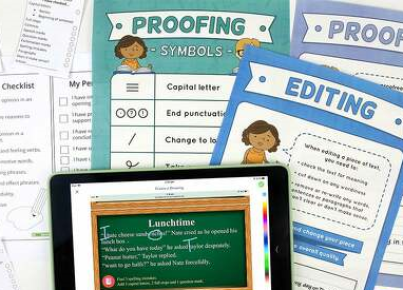Introduction
The writing process is a crucial aspect of education that helps students develop essential skills for effective communication and self-expression. It is important for both students and teachers to understand the different stages of writing so they can work together to create well-crafted pieces of work. In this article, we will explore the writing process, its importance, and how it can be applied in the classroom.
The Stages of the Writing Process
1. Pre-writing: In this initial stage, students brainstorm ideas, perform research, and gather information that will eventually be organized into a written piece. Teachers play a vital role in guiding students through this stage by encouraging brainstorm sessions, suggesting research techniques, and fostering an environment where creativity thrives.
2. Drafting: After the pre-writing stage, students begin to organize their ideas into a structured format. Teachers can help by sharing examples of well-crafted outlines or drafts and providing feedback on how to improve their work.
3. Revising: During this stage of the writing process, students refine their work by making necessary changes such as reordering paragraphs, adding or deleting information, and clarifying unclear points. Teachers can provide constructive criticism and help students make thoughtful revisions that truly improve the quality of their writing.
4. Editing: The editing stage involves polishing syntax, grammar, punctuation, spelling, and other language-based components of the written piece. Teachers should encourage students to check their work carefully for errors before submitting it.
5. Publishing: The final stage of the writing process involves sharing the completed piece with an audience. This could include publishing it online or in print or presenting it in front of classmates or another group. Teachers should emphasize the importance of not rushing through earlier steps in order to have a polished final product worth sharing.
The Importance of Teaching the Writing Process
Teaching the writing process is crucial because it offers students a clear roadmap to follow when crafting their own written works. By breaking the process down into manageable stages, teachers can more effectively guide students and provide support tailored to each step. An understanding of the writing process also empowers students to be more independent and self-motivated by giving them the tools they need to tackle any writing task.
Incorporating the Writing Process into the Classroom
To effectively teach the writing process, teachers must create a supportive environment where students feel comfortable taking risks and developing their individual voices. Some strategies for accomplishing this include:
1. Providing clear instructions: Teachers should offer step-by-step guidance for each stage of the writing process, including establishing expectations for both in-class assignments and take-home projects.
2. Encouraging collaboration: By fostering a classroom culture where peer review, group work, and constructive criticism are embraced, teachers can make the writing process feel much less daunting and more enjoyable for students.
3. Offering personalized feedback: Rather than rely on generic rubrics or evaluations, teachers should take the time to provide targeted feedback specific to each student’s needs.
4. Celebrating success: Recognizing student progress at every stage of the writing process can help boost their confidence and willingness to continue working on their craft.
Conclusion
The writing process is essential for both students and teachers in developing strong communication skills and cultivating self-expression. By implementing strategies that support each stage of the writing process, like those mentioned above, educators can successfully guide students towards becoming skilled writers who are capable of producing high-quality written work with confidence.




